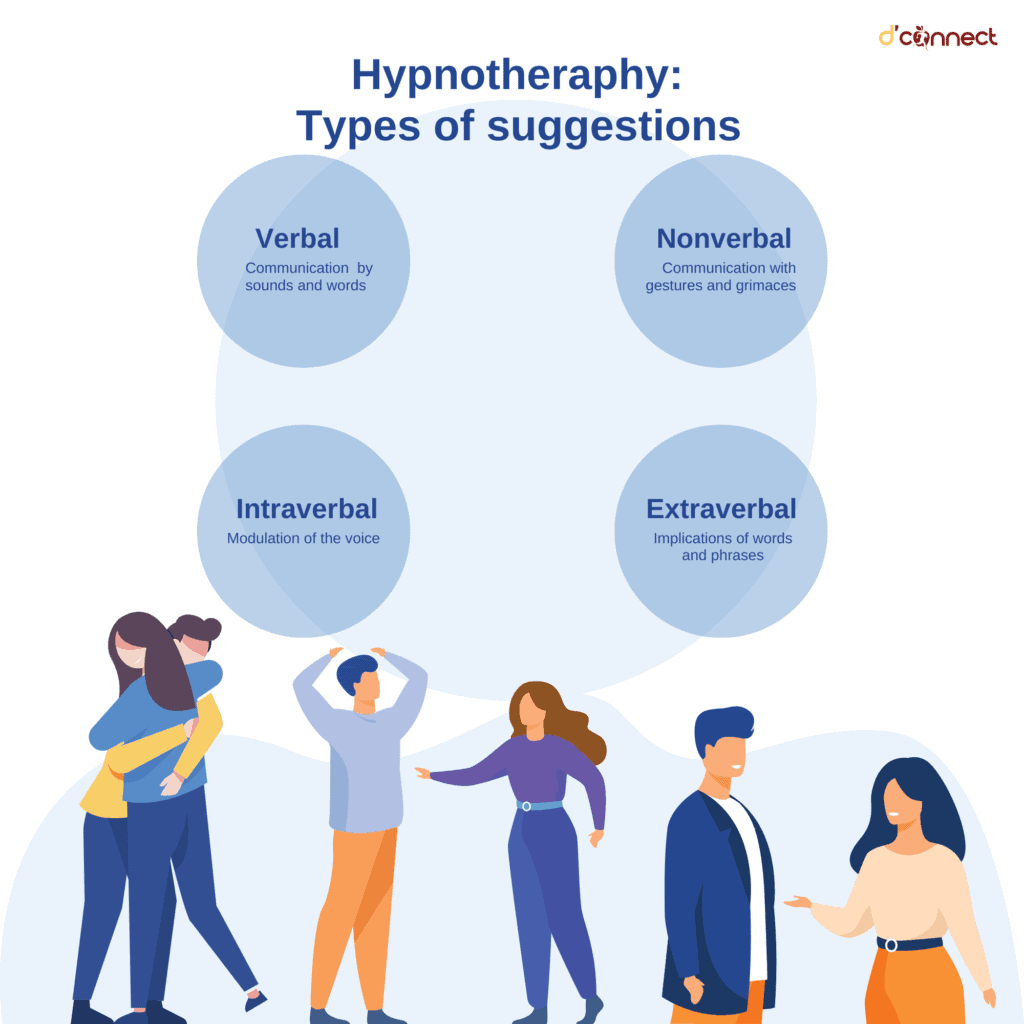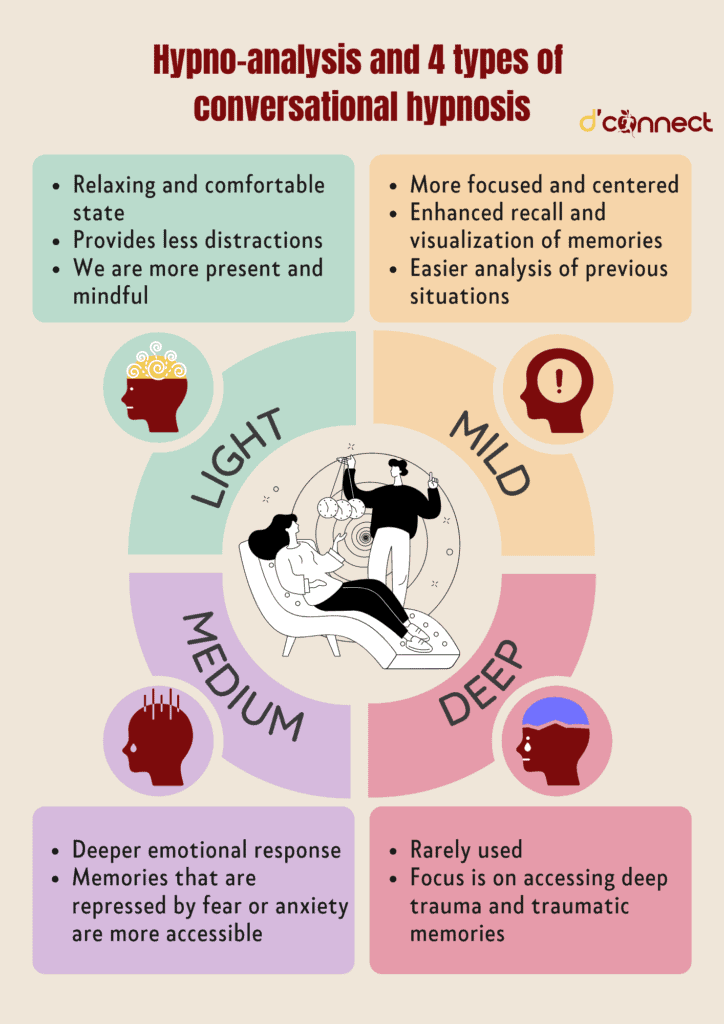
Annemieke Van Dam
(DipCAH, RSH.DipPH, WCA Cert. Wellness Coaching)
It is often said that our conscious and unconscious minds are like the rider and the elephant, with the conscious mind being the rider, and only “supposably” guiding the elephant.
To turn or pivot the elephant, we need to access it, and this is where a unique rapport with the hypnotherapist makes a difference as it bypasses the critical thinking of the conscious mind.
If you truly want to get rid of bad habits, adopt new routines, and make sure that they stick, then you should read how hypnotherapy can help you to unlock your potential and become extraordinary.
Introduction
To achieve optimal results, hypnotherapy should be targeted to specific solutions which are tailored to a person’s lifestyle, mentality, history and needs.
If hypnotherapy is not administered correctly, this can result in
- Failure to create solutions and help the person to achieve their goals
- False memories and abreactions
- (Avoidable) distress
- Epileptic seizures (if a person already suffers from a condition)
If you are new to hypnotherapy, I would suggest reading our previous article Introduction to Hypnotherapy.
How hypnotherapy works
During hypnosis, a trained hypnotherapist induces a (trance-like) state of intense concentration or focused attention.
This is a guided process utilising a range of verbal suggestions and repetition, which may vary depending on the therapist’s and/or person’s personal preferences.
The trance state may appear similar to sleep or daydreaming
However, the person is usually fully aware of what’s going on, and while in this state, the therapist will make guided suggestions designed to achieve the agreed therapeutic goals.

Because the person is in a heightened state of focus, they may be more open to proposals or advice that, in their normal mental state, might be ignored.
Hypnotherapy may place “seeds” of different thoughts in the person’s mind during the session, and soon, those changes take root and prosper. Also, hypnotherapy may clear the way for deeper processing and acceptance.
Our regular mental state is often “cluttered”, which means that the mind may be unable to absorb suggestions and guidance.[1]
Types of hypnotic suggestions
Language is a form of symbolic communication, and the meaning of words can provoke both cognitive and sensory emotional responses. Hypnotic suggestion is an extension of this mechanism.
Hypnotic suggestions can take various forms, such as
- Verbal (communication by sounds and words)
- Nonverbal (communication with gestures and grimaces)
- Intraverbal (modulation of the voice)
- Extraverbal (implications of words and phrases)[3]
Increased suggestibility is a feature of hypnosis
A typical approach is that the hypnotherapist delivers verbal suggestions while the person is in the state of hypnosis.

Direct and indirect suggestions
Direct suggestions are straightforward statements that are usually obvious.
For example: “You sleep easily” or “You do not smoke.”
Methods of indirect suggestion, sometimes referred to as covert hypnosis, aim to influence the person’s unconscious without them knowing. This is where metaphors and storytelling is used.
For example: “We sometimes think of the mind as a fertile soil where we can plant seeds that grow”.
Post hypnotic suggestions
A post hypnotic suggestion, which was advised during the session, is carried out by the person after the session is completed.
For example: “Upon waking up each morning you feel refreshed and alert.”
Trance-free suggestions
In hypnotherapy, suggestions are usually delivered while the person is in a state of trance. However, some forms of hypnotic suggestion use other methods to bypass the conscious mind.
One of such techniques is Ericksonian hypnosis, based on Milton Erickson, who we mentioned previously in our article on Neuro-Linguistic Programming.
RELATED — Neuro-Linguistic Programming: Key Methods and Techniques (Part 2)
For example, misdirection of attention can be used to divert person’s logical thinking, so that a suggested act is carried.
There are two forms of suggestions that do not rely on achieving a trance. These are
- Waking hypnosis
- Waking suggestion
Waking hypnosis

For example, a crying child who is certain that her pain will disappear if her mother kisses her is experiencing waking hypnosis.
The child is not hypnotized, but is absolutely convinced, and her logical and conscious mind is bypassed by the mother’s action.
Waking hypnosis can be used for those who are resistant to traditional hypnosis. Also, waking hypnosis can provide the same successful results as traditional hypnosis.
Superstition is a form of waking hypnosis
Waking suggestion
For example, when a person yawns they often cause another person to yawn as well.
Waking suggestion has a large role in obsessive behaviours
Aside from waking hypnosis and waking suggestion as verbal methods for delivering suggestion without trance, repetitive stimulation of any of the sensory input organs also can increase suggestibility.
How does hypno-analysis work?
Hypno-analysis is the use of psychoanalysis techniques while the person is in an altered state. It is also known as analytic hypnotherapy or analytic hypnosis.
Hypno-analysis method uses conversation

By using conversational hypnosis, the hypnotherapist can guide and encourage the person by using suggestions we previously covered. This is done when the person is in a light, mild, medium or deep state of hypnosis.
In a very light altered state, which is relaxing and comfortable, the person may experience less distractions and be more “present” and “mindful”.
In a mild state of trance, the person may be able to remember situations or visualise situations and memories more easily in order to analyse them.
In a medium state of trance, the unconscious mind is more dominant and therefore the deeper emotional responses, sometimes repressed by fear or anxiety, are more accessible.
In a deep trance, we can access deep trauma and repressed memory. This is used rarely and with safe guards because of the dangers of false memory syndrome.[3]
Related Questions
1. Is hypno-analysis the same as psychoanalysis?
Yes. A hypnotherapist takes slightly more time and effort to ensure the environment and arousal state of the person is achieved, and if appropriate state of relaxation is invoked.[3]
2. How many sessions of hypnotherapy are usually required?
Every person is unique and the number of sessions required can be dependent on the nature of issues that are to be resolved.
Individuals can, however, usually expect to attend between 3-5 sessions.
3. Are you in control of your body during a hypnotherapy session?
Yes. Contrary to the illusion of control created by the stage hypnotists, you remain under control throughout the session.[4]
4. Can hypnotherapy help with lost memories and memory recall?
Hypnotherapy enables memories to be accessed although recollections may not be accurate.
This is because our memories are not perfect due to inadequate encoding and storage. Memory is also influenced by our environment and may lead to distortions and errors in our judgments.[5, 6]
If you liked the article or have any questions on hypnotherapy and how it might help you with a certain condition or issue that you are dealing with, you can simply let us know in the comment section below.
Annemieke Van Dam is the founder of Livewell Hypnotherapy, and is a hypnotherapist and life and wellness coach operating onsite and online, New Zealand wide and internationally.
Prior to becoming a hypnotherapist, Annemieke was a manager, advisor and consultant working in the corporate, education and local government sectors in the areas of health, safety and wellbeing.
After experiencing personal challenges, Annemieke was determined to establish her practice and help others in a more direct and meaningful way. Now, she is looking to reach and help more people on their journey to wellbeing.
References
(1) Destiney Hypnotherapy and Coaching (2019). 14 Reasons Why Hypnotherapy Fails. Retrieved from https://www.destinyhypnotherapy.com.au/why-hypnotherapy-fails/
(2) Mongiovi, J. (ND) Hypnotic Suggestion. Retrieved from https://johnmongiovi.com/hypnotic-suggestion
(3) How does hypno-analysis work? (ND). Retrieved from http://www.psychoanalysis.center/analyst/hypno-analysis
(4) Do You Lose Control Under Hypnosis? (ND). Retrieved from https://www.hypnocenter.com/ask-del/do-you-lose-control-under-hypnosis
(5) Accuracy and inaccuracy in memory and cognition. University of Minnesota Libraries Publishing (2010). Retrieved from https://open.lib.umn.edu/intropsyc/chapter/8-3-accuracy-and-inaccuracy-in-memory-and-cognition/
(6) Charach, R. (2021) Hypnosis for Memory Recovery Can it be the Key to Recall? Retrieved from https://hypnohub.com/hypnosis-for-memory-recovery






